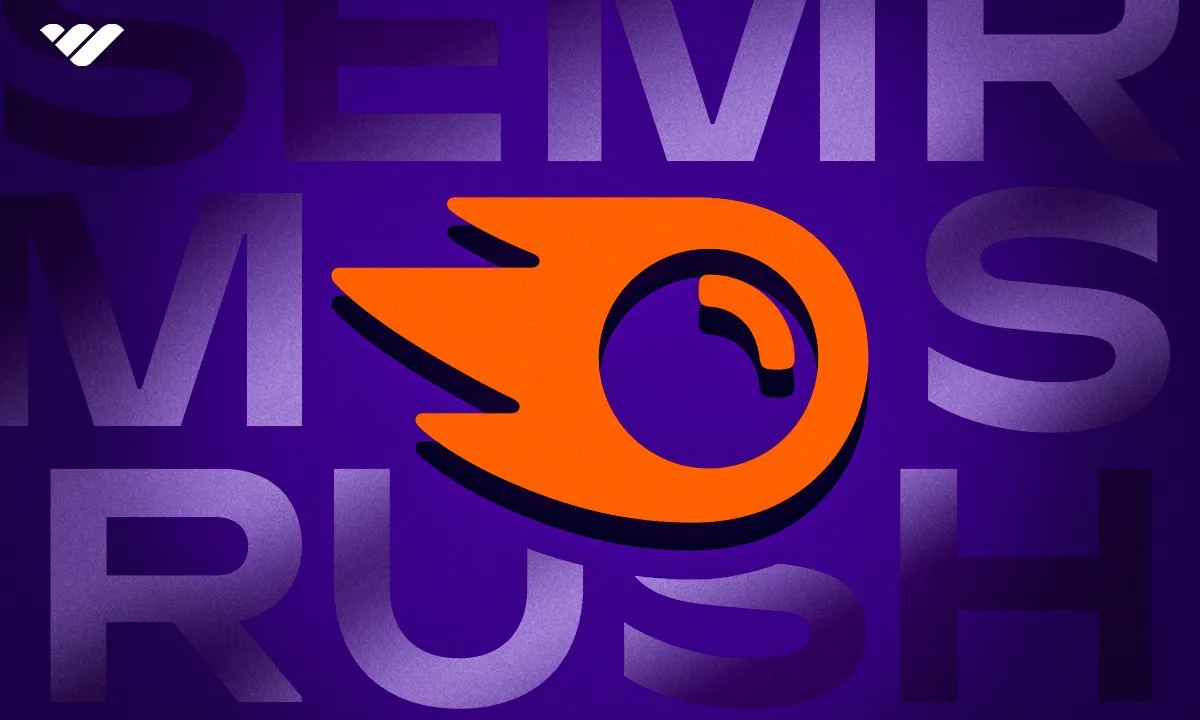Semrush is a powerful SEO and marketing platform. It's worth it for established brands that require SEO management but it's likely too pricey for small businesses and startups.
Key takeaways
- Semrush reported nearly 108,000 paying subscribers in 2023 plus over 1 million free users.
- The platform's paid plans start at $139.95 monthly, making it expensive for startups.
- Semrush offers 20+ SEO tools across competitive research, keywords, link building, and auditing.
- Additional user accounts cost $45-$100 per month depending on your subscription plan.
- Free alternatives like Google Analytics and Google Keyword Planner provide basic SEO functionality.
Semrush helps businesses improve their search engine ranking through SEO tools, keyword research, and competitor analysis. The platform also offers marketing features.
From social media to paid ads, growing your ecommerce business presence is a must. SEO (Search Engine Optimization) is an important tool for online visibility. Platforms like Semrush help brands improve their website’s SEO, boost search engine rankings, and generate more sales.
Not sure how it works or if it’s right for you? We’re here to help! In this Semrush review, we’ll take you through the iconic software's features, pricing, and pros and cons. Plus, we’ll suggest some alternatives for boosting your brand online.
So, let’s get started.
What is Semrush?
Semrush is a tool that helps businesses (and individuals) improve their visibility online. It’s a software-as-a-service (SaaS) platform, which means you’ll pay a monthly fee to use the tool rather than buy it outright.
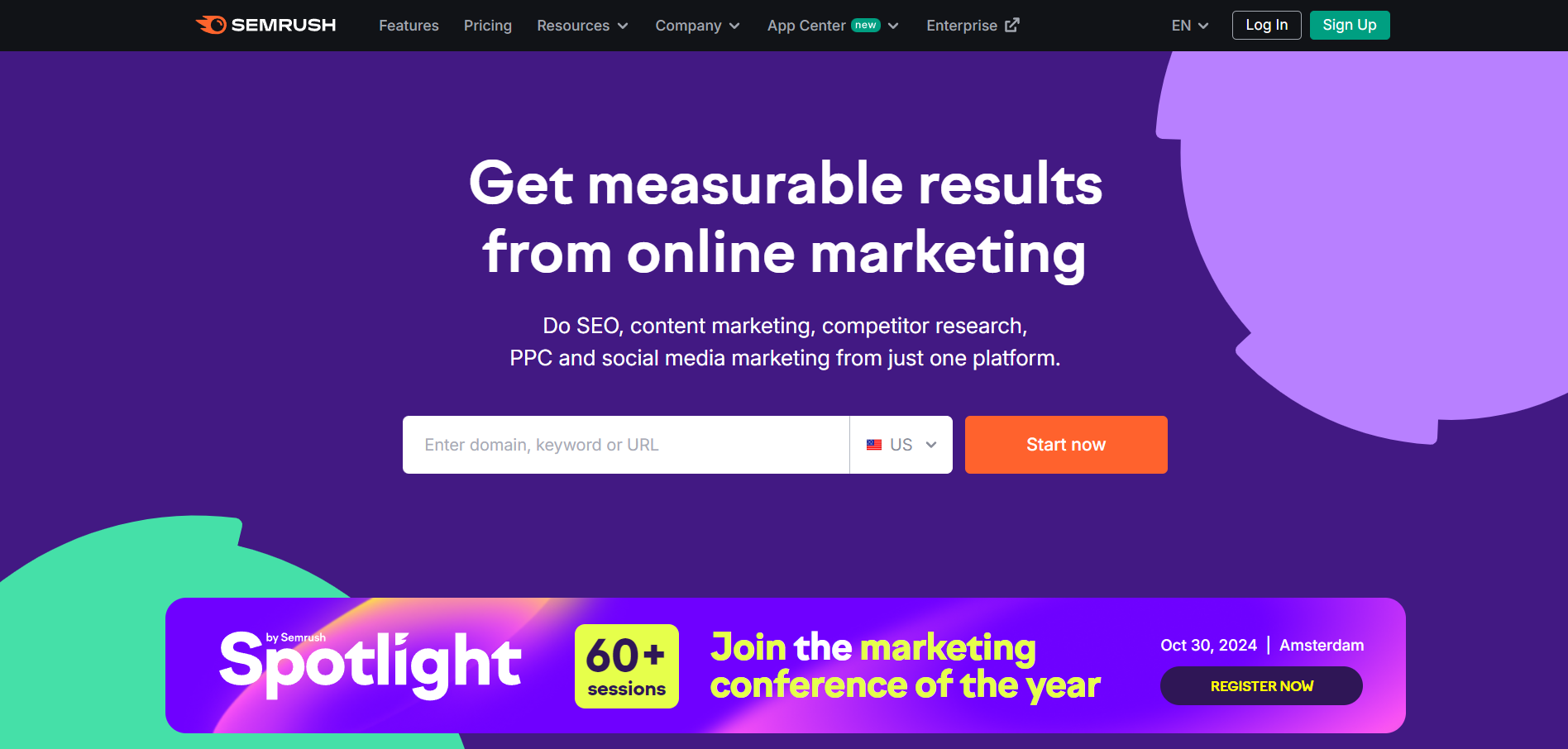
Semrush primarily focuses on search engine optimization (SEO), helping brands boost their ranking in search engines. But that’s not all it does. The platform offers a series of toolkits, each centered on a different aspect of online marketing. These include social media marketing, Google Ads marketing, digital agency growth, and local marketing and SEO.
Some of the toolkits are included in all Semrush subscriptions. However, others require an upgrade to a higher plan. For example, you’ll need to pay for the Guru or Business plans to access the content marketing tools. Other toolkits must be purchased as an add-on.
In the SEO world, Semrush is a big name. In 2023, the platform reported an increase to nearly 108,000 paying subscribers. Beyond this, there were also 1 million+ active customers using the free plan.
Semrush toolkits: What does Semrush actually do?
As mentioned, Semrush offers several toolkits covering different aspects of online marketing. To get to grips with how the platform works, let’s take a look at these toolkits and their features in more detail.
SEO
Semrush’s SEO toolkit features 20+ tools for developing your website’s SEO. When you first access the toolkit, you’ll usually head to the SEO dashboard. Here you’ll get an at-a-glance view of your SEO metrics, including domain analytics, position tracking, and much more.
The SEO tools are then split into four key sections on the left-hand navigation menu. These are:
Competitive research
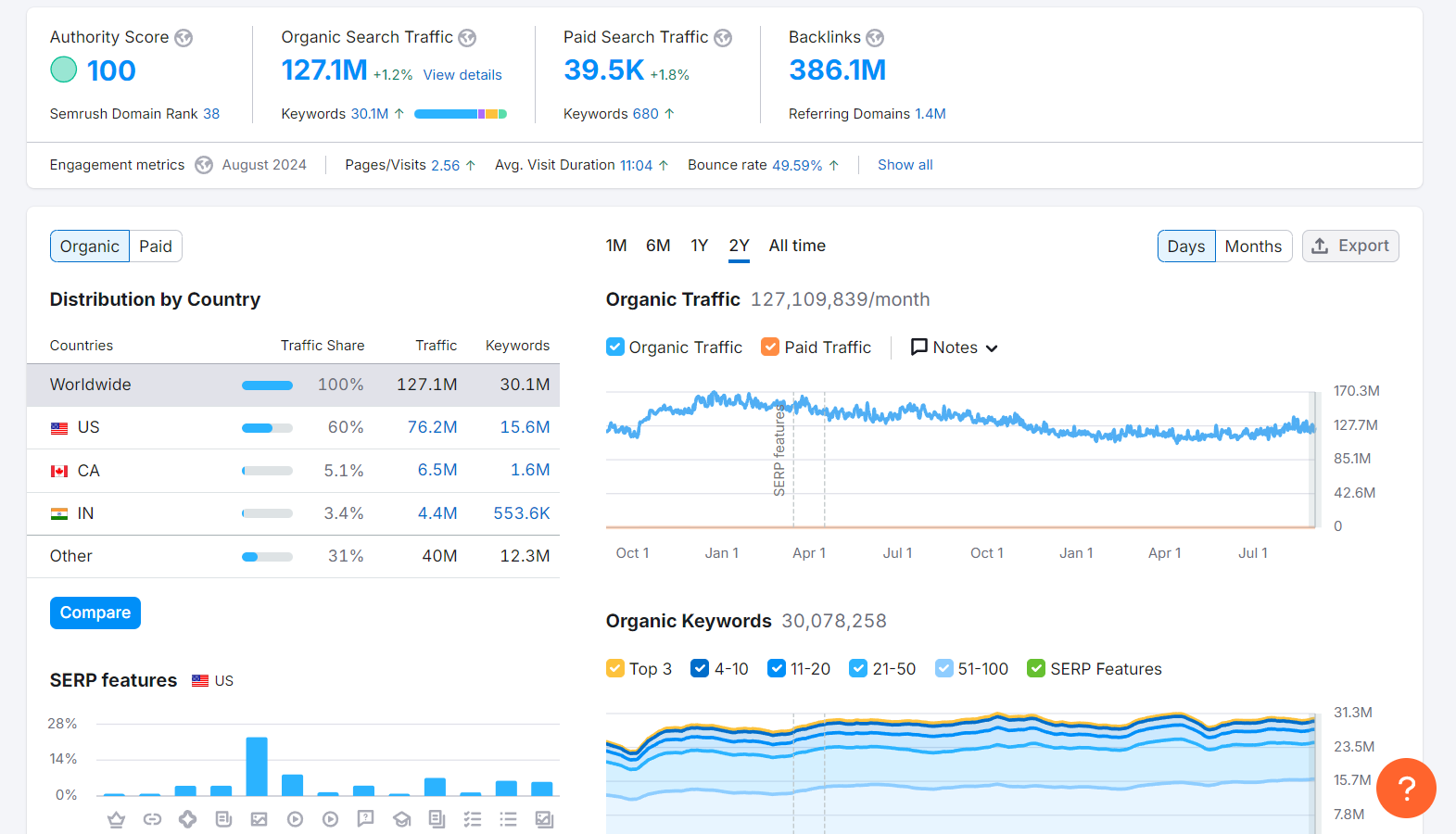
Don’t just beat your competitors, join them! Semrush’s competitive research tools can help you uncover successful SEO strategies used by your competitors. Explore their organic rankings, trace their website traffic, and discover the keywords they use.
For example, with the Backlink Gap tool, you can pinpoint domains that are linking back to your competitors and find which ones you’re missing out on.
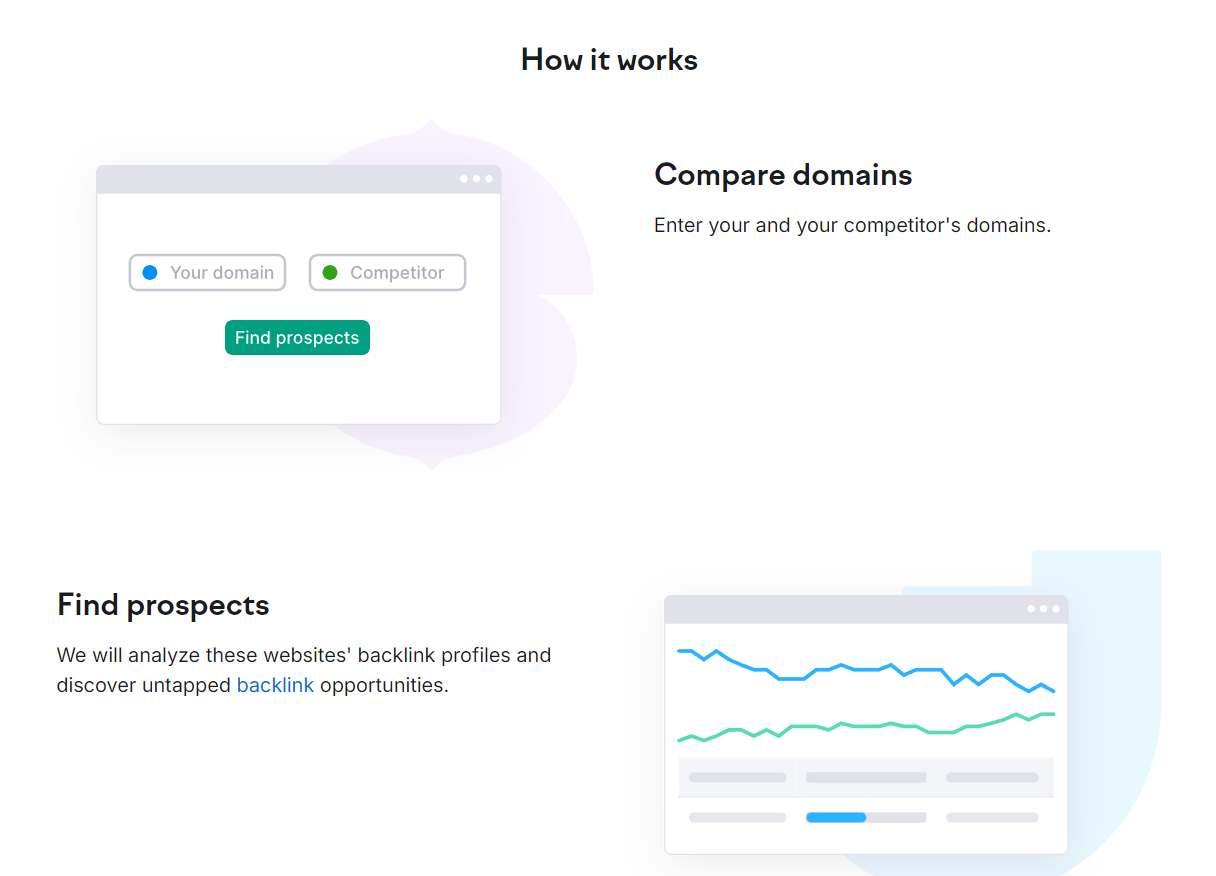
Keyword research
Using the right keywords in your blog and website content can give your brand a boost in search engine rankings. Semrush features a robust keyword finder tool, with millions of potential keywords and phrases. You can also review and create reports on your website’s current rankings and leverage AI to create a keyword strategy.
Link building
Backlinks from trustworthy websites help to build your brand’s reputation. Semrush makes this easier by helping you find opportunities for backlinks and pinpoint any problematic backlinks that could be affecting your site. Keep in mind that you’ll still need to put in the work to reach out for backlink opportunities.
On page & tech SEO
This tool helps you to develop good SEO practices for your website. That includes a comprehensive SEO audit on your web pages and technical SEO, including website speeds and overall health. You’ll get guidance for developing your SEO, along with templates for optimized content.
Semrush’s SEO features are popular, providing vast data insights on a streamlined platform. However, reviews, like this one on Trustpilot, suggest that many customers limit their use of the platform due to its expensive pricing.
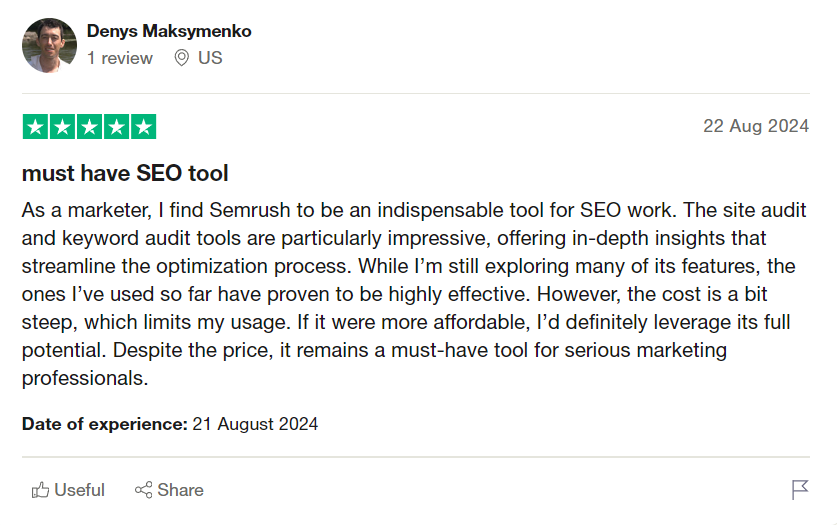
Advertising
Semrush also features a diverse tool for paid advertising campaigns. You can use this to discover the right keywords to bid on, review the ads and keywords of your key competitors, and understand and report on your position in paid search.
For example, you can check your competitor’s ad copy through the Advertising Research tool.
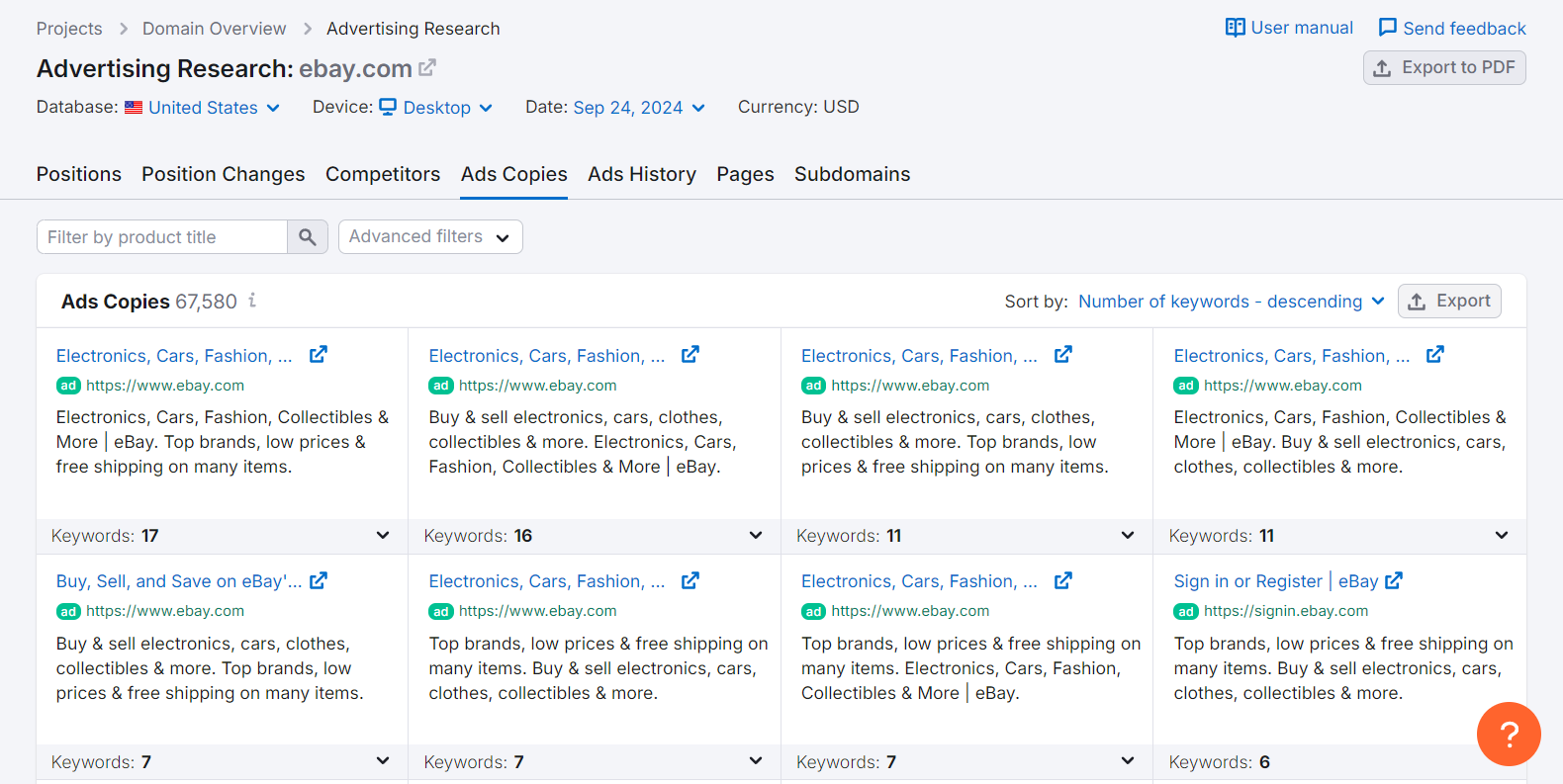
Management
Semrush provides a variety of management tools to synchronize all aspects of your marketing campaigns. That includes recording significant updates and events through notes and gathering data into streamlined reports.
Semrush Local
If your business sells from a physical store or provides services to a specific locale, then Semrush Local could help your brand succeed. This tool helps you to optimize your Google Business profile, get seen in top directories worldwide, and review your Google Maps rankings.
Semrush Local can be purchased as an add-on to your subscription or as a standalone service. Keep in mind that each offering covers one location, and you’ll need to make separate purchases for other locations.
Semrush Social
Manage your social media content with Semrush Social, from developing a strategy to analyzing your competitor’s campaigns. Like Semrush Local, you can buy this toolbox as an add-on or standalone software.
However, some reviews, like this one on GetApp, suggest the features aren’t as robust as other social management tools.

Content marketing
Once you have keywords, you might still find it hard to decide how to use them in your content. Semrush’s Content Marketing tools help businesses to research, plan, and create blog content. It helps you to pinpoint popular topics and find the best way to write about them.
These tools are only available with the Guru or Business plans.
Semrush .Trends
Get a head start on your industry with Semrush .Trends. This tool gives you essential insights into market trends, competitor promotions and content, and audience data.
You can purchase Semrush .Trends as an add-on to paid subscriptions or part of a customized plan for an extra $289 per month per user.
Agency Growth Kit
Semrush also features an Agency Growth Kit, which supports marketing agencies in finding new clients and communicating with them on projects. It includes a platform for showcasing agency services, so potential clients can see your work. You’ll also have access to a Client Portal for connecting with your clients and automating reports.
Semrush pricing
It’s clear that Semrush features an essential range of marketing tools for digital brands. So, the big question is, “How much does Semrush cost?”
Semrush pricing is split into three different paid plans. These are:
| | Pro | Guru | Business |
|---|---|---|---|
| Pricing | $139.95/mo (monthly) $117.33/mo (annually) | $295.95/mo (monthly) $208.33/mo (annually) | $499.95/mo (monthly) $416.66/mo (annually) |
| Key features | Core features + SEO/paid ads tools, keyword research, site audits, and more | Pro plan features + content marketing, historical data, Locker Studio integration, and more | Pro and Guru features + API access, Share of Voice metrics, increased limits, and more |
| Projects | 5 | 15 | 40 |
| Keywords | 500 | 1,500 | 5,000 |
| Analytics reports results | 10,000 | 30,000 | 50,000 |
| Site Audit crawls/mo | 100,000 | 300,000 | 1,000,000 |
| Scheduled reports | 5 | 20 | 50 |
| Content marketing tools | No | Limited access | Full access |
Alternatively, there’s also a free plan for Semrush. However, this has relatively limited features compared to the other tiers. For example, you can run up to 10 keyword searches each day and track up to 10 keywords. This could be useful if you want to test out the platform, though.
You’ll also need to factor in any relevant add-ons for your business. Their prices are as follows:
- Semrush Local
- Basic plan: $20 per month per location
- Premium plan: $40 per month per location
- Semrush .Trends
- $289 per month per user
- Social Media Management
- Semrush Social: $29.99 per month
- Social Content AI: $29.99 per month
- Agency Growth Kit
- Start tier: $69 per month (Pro plan only)
- Scale tier: $149 per month (Pro and Guru plans only)
- Advanced tier: $249 per month (All paid plans)
Semrush also features an AI tool, ImpactHero, which costs $200 per month. However, the total price will be determined based on how many campaigns you purchase.
If you want additional users on your Semrush account, you’ll need to pay extra for this. Pricing depends on your plan:
- Pro plan: $45 per month per user
- Guru plan: $80 per month per user
- Business plan: $100 per month per user
What are the pros and cons of Semrush?
Although Semrush has some very useful tools, no platform is perfect. Whether Semrush is right for you will depend on your business. Here’s what you’ll need to consider:
Semrush benefits
- Semrush is an all-in-one online marketing platform, with tools for SEO, social media, advertising, content, agencies, and more.
- Has options to create a tailored platform, with add-ons from every area of marketing. So, if you find Google Ads and local SEO are your best tools, you can focus on these.
- Vast data with generous limits on searches and reporting (on paid plans).
Semrush drawbacks
- Perhaps the most obvious—and important—disadvantage of Semrush is its expensive pricing. Many digital entrepreneurs are priced out of Semrush’s paid plans.
- While there is a free plan available, it’s very limited and typically not suitable as a long-term solution.
- Not all tools are suitable for certain businesses. For example, the social media tools may not be advanced enough for businesses that frequently market via these platforms.
- Adding extra user accounts is also expensive.
The Verdict: Is Semrush Really Worth It in 2024?
Ultimately, it depends on your business needs, level of marketing experience, and budget.
If you’re a large brand looking to improve your ecommerce marketing through SEO, paid ads, social media, and more, then Semrush features essential tools. It’s also a solid investment if you already have SEO knowledge and a suitable budget.
But if you’re completely new to marketing, then there’s a sharp learning curve with all of Semrush’s features. Not to mention the expensive pricing, which effectively locks off the paid plans to most startups and small businesses.
Alternatives to Semrush for Boosting Your Online Visibility
There are other opportunities to grow your business outside of Semrush—and they don’t require breaking the bank.
Sell on an online marketplace
Digital marketplaces like eBay, Amazon, and Etsy draw millions of eyes onto your products. Leveraging their ready userbases can instantly boost your brand. Plus, if you sell digital goods, there are tailor-made platforms like Whop.
With just a 2.7% + $0.30 transaction fee when you make a sale, Whop is an affordable option for budding entrepreneurs.
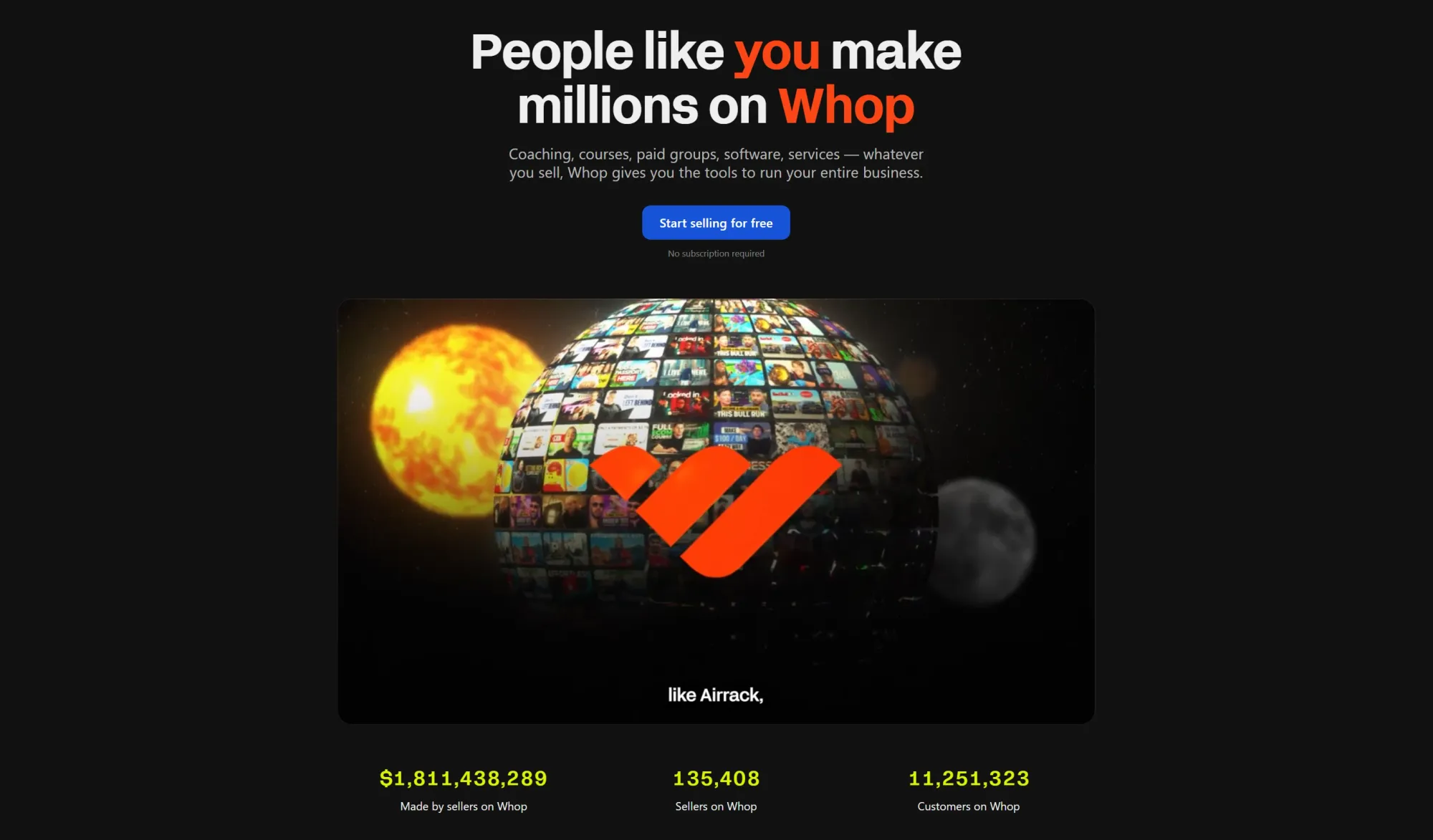
Use free analytics tools
Semrush isn’t the only option for finding keywords and exploring your marketing data. Google Analytics and Google Keyword Planner are two tools that are useful for analyzing your website and SEO/paid ads keyphrases. Social media platforms like Instagram and Facebook also have their own analytics tools, which are free to use.
Email marketing
Email newsletters can be a great way to reach new audiences without relying on the algorithms of social media sites. Plus, it’s even possible to monetize them with paid subscriptions or by selling complementary online courses and digital products.
Find ecommerce marketing advice on Whop
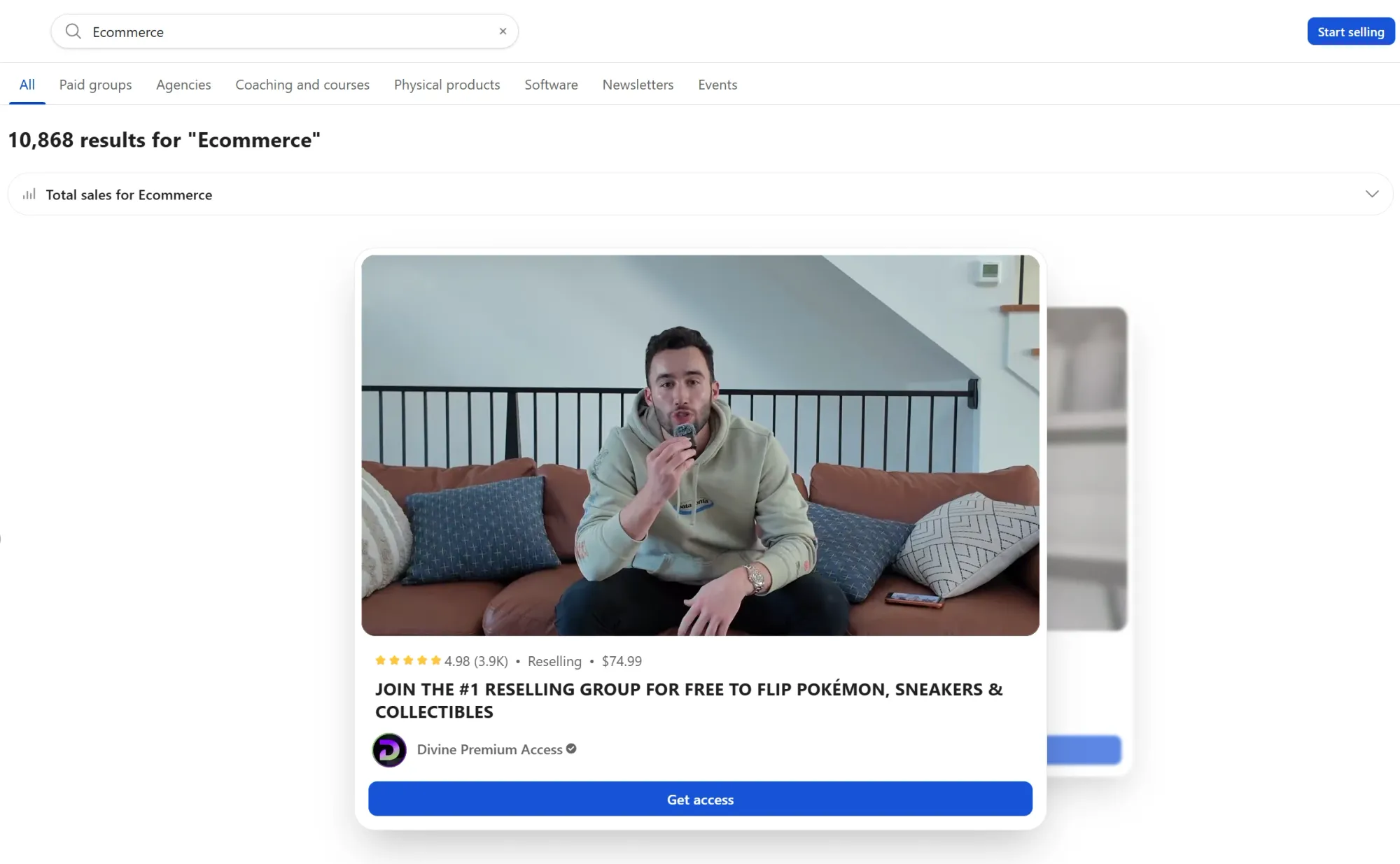
Marketing is essential for digital creators, but with so many different forms of marketing it can be hard to choose which technique to focus on.
Do you want to go all-in on SEO, or put your efforts into social media marketing? Would your business benefit from email campaigns, or are paid ads the way to go?
Whop can help you to discover the right marketing campaign to suit your business and then master it. Whop is a social commerce platform that is home to thousands of successful business owners who share their knowledge and skillset in the form of online courses, communities, ebooks, and more.
However you choose to market your business, make sure you are doing it in the right way. A poor marketing campaign can cost you thousands, but a great one can make you millions.
Head to the Whop Discover today and find a course or community that suits you.


